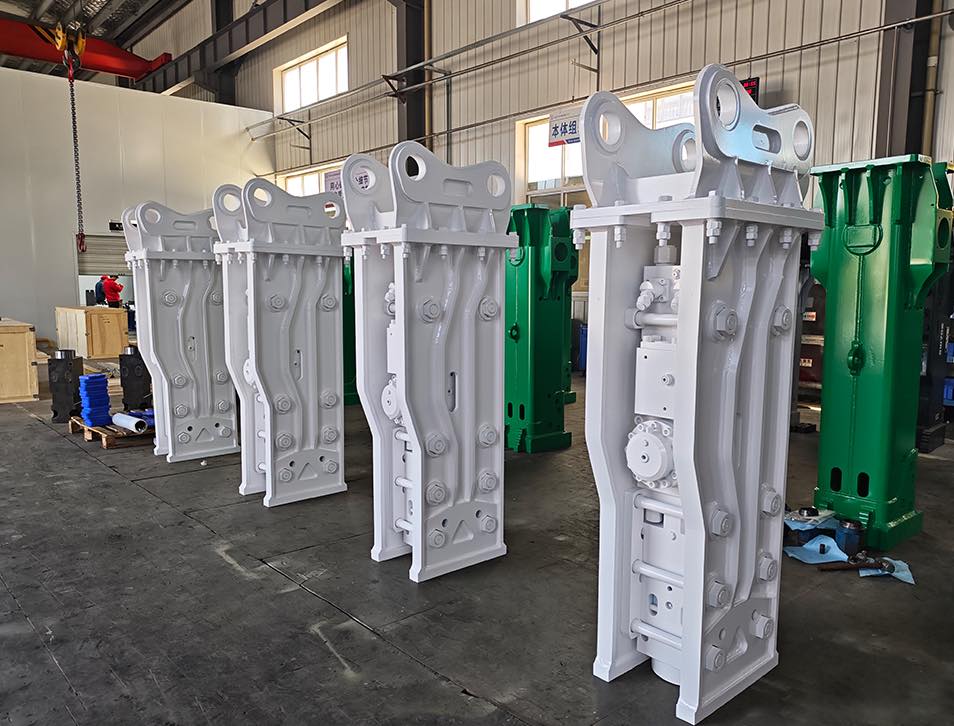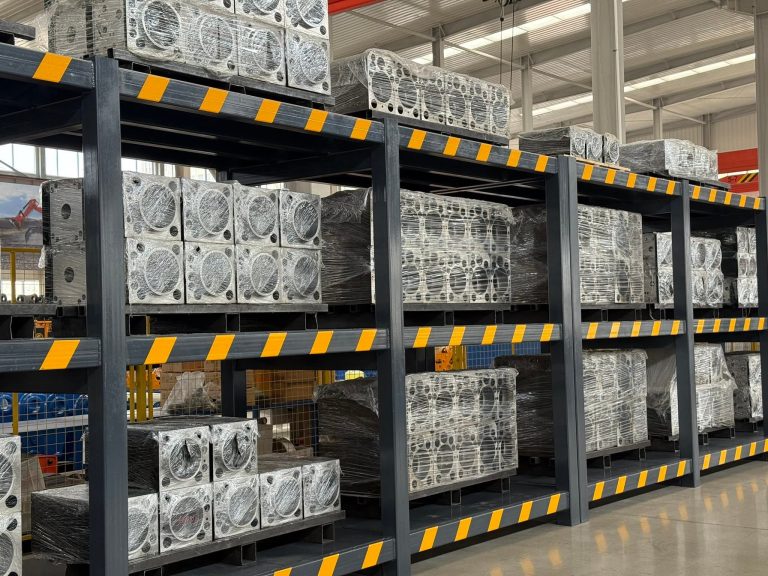Hydraulic breaker system valves are critical components that control the direction of hydraulic fluid to enable the piston to deliver normal and forceful blows. METDEEM valves of high accuracy offer smoother function, higher impact frequency, and long-term durability even in harsh demolition or mining conditions. The article explains the working of valves, their impact on breaker efficiency, and maintenance and replacement guidelines.

What Is a Valve
Basic function
A valve is a vital hydraulic component that reverses the direction of hydraulic fluid flow in a hydraulic system. It establishes whether the fluid advances the piston or retracts, thus controlling the impact stroke in hydraulic breakers. Such an operation enables even and forceful blows necessary for breaking rocks, concrete, and other hard substances.
Role in the Hydraulic System
Fitted in the breaker valve body, the valve cooperates with main elements like the piston, cylinder, and accumulators. Through curving hydraulic fluid, it facilitates the piston to cycle without interruption and provides multiple blows. Good-quality valves are made to withstand hydraulic shocks, safeguarding internal parts while maintaining a consistent breaker operation.
Common types used in METDEEM breakers
METDEEM employs heat-treated 20CrNiMo steel for its valve with surface hardness of HRC 55°–58°. Valves are finely ground to minimize friction and enable smooth switching, raising impact frequency and prolonging service life. This blend of strength and fine grinding renders the METDEEM valve highly resistant to hydraulic shock and wear.
Importance in Hydraulic Breaker
Directional control function
In a METDEEM hydraulic breaker, like the DM35 Hydraulic breaker, reversing the piston motion hinges upon the valve. The flow of pressurized fluid into the valve reverses the direction of flow to push the piston downwards for impact and reverses flow to reset the piston. Two-way control is made possible for continuous operation.
Impact on performance and efficiency
For the same pressure and the same flow rate, our products are faster working and have a more energetic impact. This is partly attributable to the high precision machining of components such as the valve. A properly operating valve reduces the energy loss in switching, improves efficiency, and reduces the work cycles.
Protection against internal damage
A good valve also safeguards internal parts against pressure surges and system shock from reductions. With accumulators—F120/HB10G models—itself in combination—the system operates more evenly and has a longer part life.

How METDEEM Designs Its Valves
Design principles and materials
METDEEM valves are made of high-toughness 20CrNiMo steel and subject to surface heat treatment for heavy loading resistance. Precision-ground valves allow for smoother switching, more frequent impact, and reduced the wear of seals and internal parts.
Compatibility with METDEEM breaker models
Each valve is designed for the breaker’s flow and pressure specification. For instance:
- DM15: 0.8–1.5 ton excavators, 20–30 L/min flow, 70–140 kg/cm² pressure.
- DM90/HB8G: 45–80 L/min flow, maximum 150 kg/cm²pressure.
0.04 mm diameter small hammer piston diameter ensures modularity in several models, and METDEEM valve is strongly made to be module compatible with this philosophy of design.
Maintenance and durability considerations
Due to CNC grinding and material improvement, the METDEEM valve provides reliable operation in the long term. The hammer valve is ground, thereby realizing smoother switching and higher impact frequency. This reduces wear, improves seal life, and reduces maintenance intervals even under heavy-duty operation in demolition or mining work.
Understanding Faulty Valve
Symptoms of malfunction while in operation
Some common situations under which this occurs are irregular hammering, reduction of impact force, or stammering strokes. The breaker may also fail to reset its piston properly or produce unusual noises due to unstable oil flow direction.
Effects on breaker performance
When the valve fails, the whole operation cycle is lost. The equipment may lose power or efficiency and even lead to premature failure of other components, like pistons or seals, due to unbalanced pressure loads.
When to check or replace
The valve needs to be checked by operators in the event of instant loss of power, unusual noise, or leak indications are observed around the vicinity of the valve housing. Metal debris within hydraulic oil also suggests possible internal damage to the valve. We suggest checking at regular service intervals or after 200 hours of service.
Maintenance and Troubleshooting Tips
Routine inspection practices
Search for evidence of seal wear, valve face scoring, or sticky switching action. Always inspect oil cleanliness since dirt may result in valve motion jamming.
Cleaning and lubrication recommendations
Periodically remove dirt using compatible cleaning chemicals. Use lubricants acceptable to high-pressure hydraulic systems. Do not over-grease since it may result in sticky motion within the valve body.
When to have METDEEM serviced
If problems are still encountered after initial checks or in the event of suspected internal deterioration, please contact our technical support team. For further information or to schedule a quote, please contact us at the following contact details.
- Tel: +86-15318660928
- E-mail: Metdeem108@126.com
Upgrading or Replacement with METDEEM Parts
Advantages of Genuine Parts
Equipped with original METDEEM valves provides ideal fitment and maximum compatibility with your model breaker. METDEEM-branded Furukawa Series Hydraulic Breakers are well-known all over the world due to their improved performance as far as reliability and durability are concerned. Genuine spares retain CE-certification safety and performance standards.
Installation guide for the new valve
Before placing a new valve—e.g., one placed to fit DM1550, with working flow 120-150L/min—check that all ports are contamination-free, seals are in good condition, and torque readings are strictly adhered to. Check your breaker’s manual for alignment marks or seek our technicians’ guidance.

Conclusion
The valve is the center of attention of a hydraulic breaker’s piston control system. METDEEM valves are precisely engineered for enhanced performance, efficiency, and longevity to provide trouble-free performance in heavy-duty use. Proper maintenance practices followed by the users can achieve maximum breaker life and reliable high-impact performance by replacing components with original ones.
FAQ
Q: Are third-party valves permissible on my METDEEM breaker?
A: Technically viable, we strongly suggest we only install METDEEM parts because of compatibility, machining tolerances, and warranty.
Q: How frequently should I check my valve?
A: We suggest you check at every maintenance interval or after every 200–300 hours of operation, based on usage rate.
Q: Does METDEEM provide replacement service?
A: In the first 6 months, we provide free replacement service.
Q: Where can I buy original METDEEM parts?
A: Please check our official website or contact us directly through email or phone.



